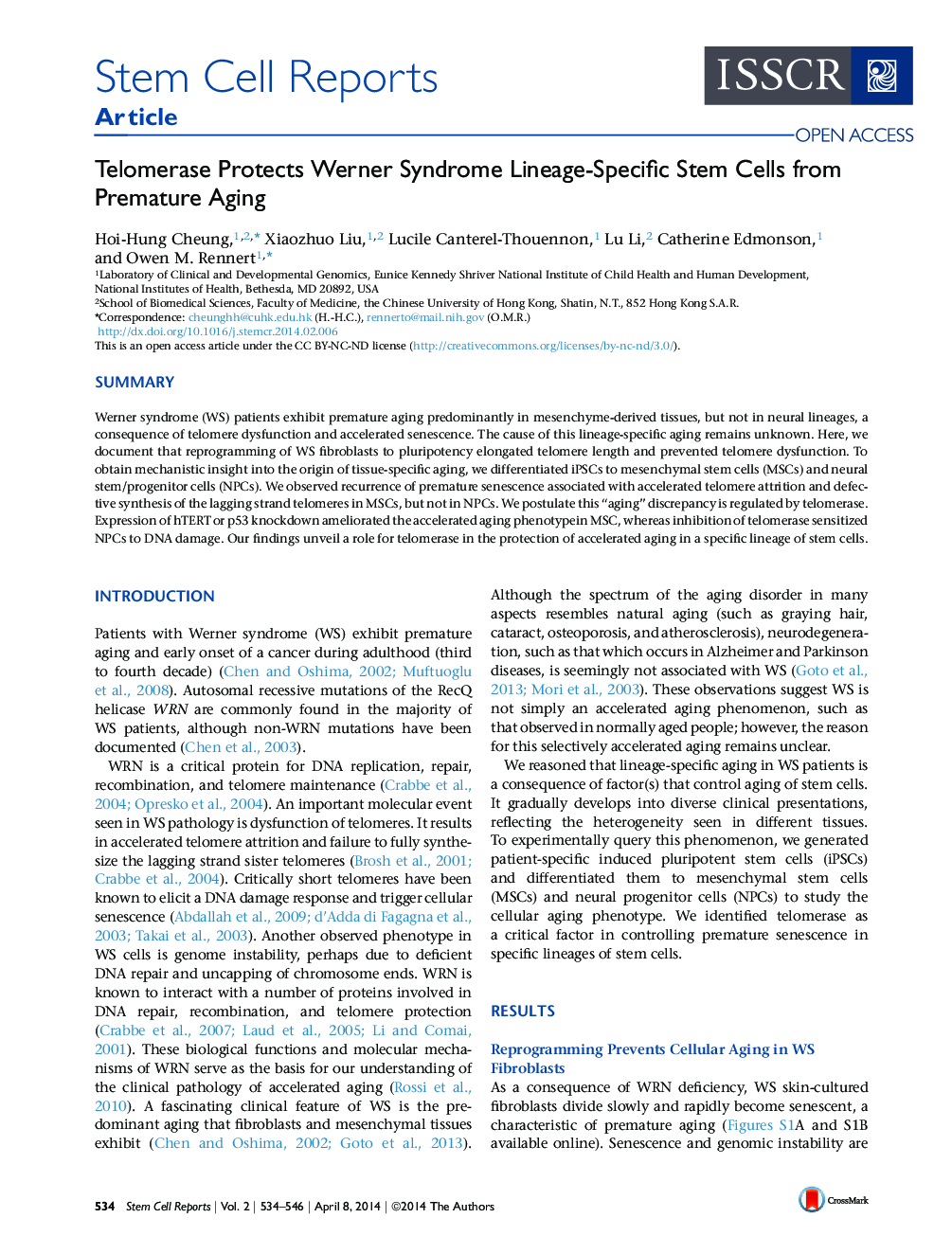| Article ID | Journal | Published Year | Pages | File Type |
|---|---|---|---|---|
| 2093820 | Stem Cell Reports | 2014 | 13 Pages |
•Prevention of premature senescence with corrected telomeres in reprogrammed WS iPSCs•Recurrence of premature senescence and telomere dysfunction in WS iPSC-derived MSCs•Rescue of premature senescence in WS MSCs by hTERT overexpression or p53 depletion•Telomerase protects and prevents NPCs from DNA damage
SummaryWerner syndrome (WS) patients exhibit premature aging predominantly in mesenchyme-derived tissues, but not in neural lineages, a consequence of telomere dysfunction and accelerated senescence. The cause of this lineage-specific aging remains unknown. Here, we document that reprogramming of WS fibroblasts to pluripotency elongated telomere length and prevented telomere dysfunction. To obtain mechanistic insight into the origin of tissue-specific aging, we differentiated iPSCs to mesenchymal stem cells (MSCs) and neural stem/progenitor cells (NPCs). We observed recurrence of premature senescence associated with accelerated telomere attrition and defective synthesis of the lagging strand telomeres in MSCs, but not in NPCs. We postulate this “aging” discrepancy is regulated by telomerase. Expression of hTERT or p53 knockdown ameliorated the accelerated aging phenotypein MSC, whereas inhibition of telomerase sensitized NPCs to DNA damage. Our findings unveil a role for telomerase in the protection of accelerated aging in a specific lineage of stem cells.
